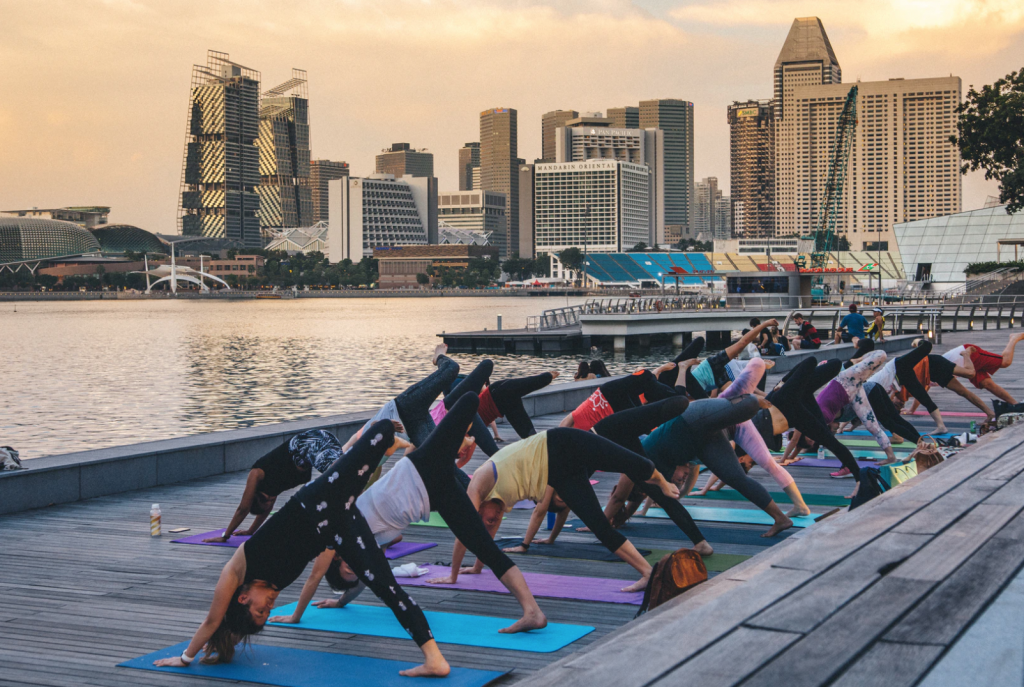You’ll find yoga happening in the most unusual of places: hospitals, university football fields, and physical therapy facilities. Though it’s a bit unusual, it’s becoming more commonplace as health and sports training professionals are discovering the benefits of yoga in healing and improving performance. The benefits of treating a range of injuries are obvious and use examples like detaching from stress, relaxation, and releasing blocked movement patterns. According to Yoga For Athletes, leading physiotherapists and therapists estimate there are over 70 conditions which yoga can be used to treat.
Most yogis or yoga practitioners can spout off the list of good things yoga does for them, but until recently, yoga has been, at least in the Western world, mainly limited to personal and group fitness. But with a new open-mindedness toward alternative practices in healing and training, yoga is marching to the foreground as an approach to physical healing and athletic therapy and exercise. Beginning at many all-day gyms across the nation, yoga classes are also starting to become more prevalent in high schools. In many cases, these classes are required, but some schools offer voluntary courses as well. Yoga classes for athletes are a growing trend too, and many athletes have certified that they are or were into yoga.

While many workplace injuries involve accidents, there are just as many involving repetitive movements. Sitting at a keyboard, standing in a mass production line, or lifting a certain way over and over again can cause debilitating pain, a kind that is often treated with pain-killers, anti-inflammatory drugs, physical therapy, and sometimes surgery. Yoga offers a kinder, gentler approach to these stress injuries by helping patients and clients focus on and take responsibility for their own recovery. Stretching and strengthening muscles can relieve much of the stress caused by repetitive movement, without the need for invasive intervention. Yoga therapy can also have much longer-lived results when it teaches the patient how to handle stress whenever it occurs so that it doesn’t lead to injury.
As yoga practitioners focus on breath, lengthening the spine and muscles, and increasing strength and balance, you would think it would be a natural fit for many athletic endeavors. There are many sports, recreational and professional, that use yoga, but many more are discovering its benefits. While it’s important for a swimmer to build strength with exercises geared toward certain muscle groups, it’s just as important, and often overlooked, to build strength and flexibility in muscles that support those trained muscles. Yoga works on so many parts of the body and mind that in the end, everything is supported.

While yoga is a fantastic fitness activity for you, no matter what you do, it’s also just about the best complementary activity you can engage in to beef up your performance in your recreational sport of choice. Many weekend warriors end up with injuries due to over-extensions, failure to stretch before or after, or simply being unprepared physically for a certain challenge. A regular yoga practice during the week can extend the weekend simply by preventing injury – and that’s a great weekend.
Whether you need to eliminate pain in the neck or shoulders from keyboard-itis, find some relief from an old injury, or gear up for a weekend of mountain biking, incorporating yoga into your week, perhaps with a trained professional, can help you on your way to a loose, flexible, and increasingly enjoyable fitness experience.
Laila Azzahra is a professional writer and blogger that loves to write about technology, business, entertainment, science, and health.
